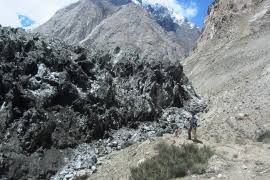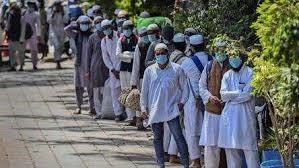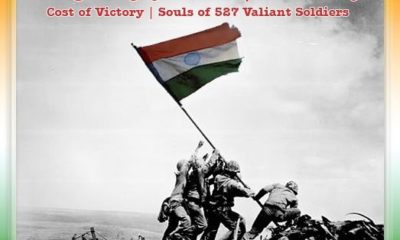Feature
Portion of Kargil war area continues to be occupied by Pakistan in JK
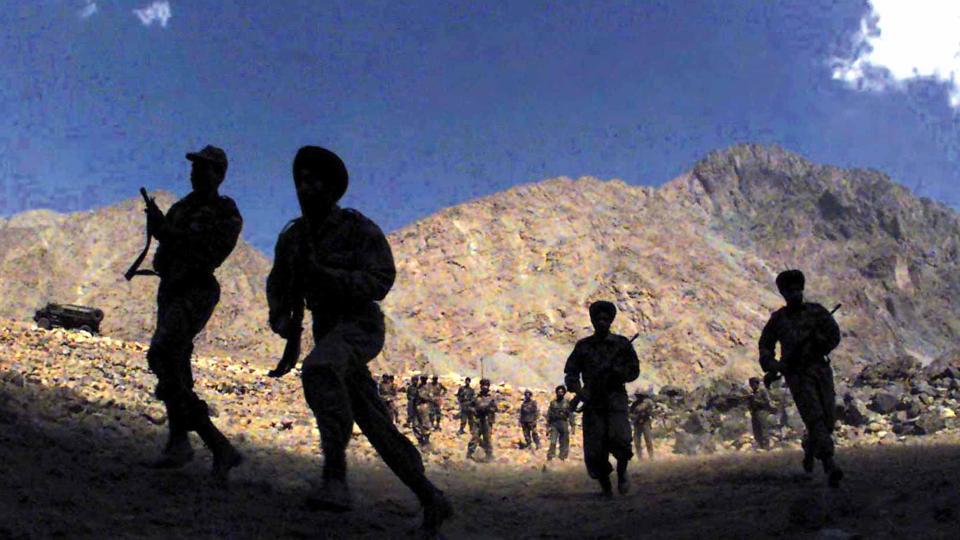
New Delhi: Just few days before the 19th anniversary of the 1999 Kargil War, which falls on 26 July, a little-known controversy of the time is getting a fresh lease of life.
The activities on social media on Sunday supposedly based in Pakistan, repeatedly targeted Gen. Ved Prakash Malik (retd) who was the Army chief during the war for the Army’s inability to recapture at least three heights near the Line of Control that continue to be in Pakistani possession.
The discourse was particularly centred on a strategically significant feature, Point 5353, which has a domineering view of the national highway between Srinagar and Leh. It has never been occupied by Indian forces since the war.
The Print pieces together the events that prevented the Army from regaining Point 5353 (the numbers denote the height of the peak in metres), including a directive from the Vajpayee government and failed attempts to broker a settlement with the Pakistani army.
The objective of war was sparked by the presence of intruders, backed by the Pakistani army then headed by Gen. Pervez Musharraf, who occupied the heights between 11,000 and 17,500 feet.
The intruders had illegally occupied peaks named Tololing, Tiger Hill and unnamed features like Point 4170 and Point 5353 that belonged to India on a 100-km long front.
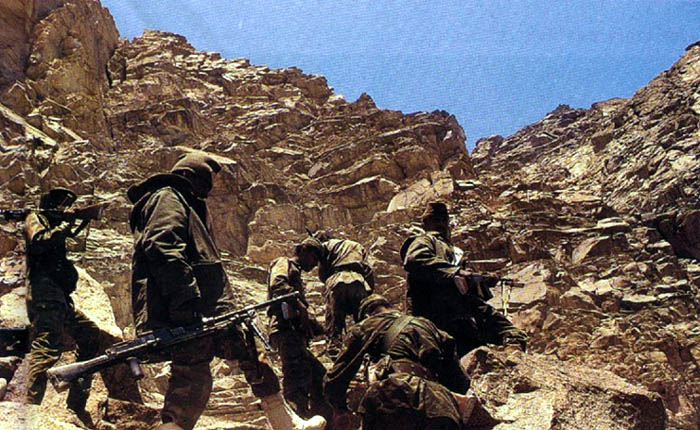
They were also functioning as ‘observers’ for the Pakistani artillery to direct fire on Indian military traffic.
The heights are vital to the Indian Army as in the summer months they are used to stock up on winter rations before the national highway is covered in snow. This is also the route for supplies to be ferried to soldiers on the Siachen Glacier.
When the Indian Army set out to free the territory of intrusions, with aid from the Air Force, recapturing Point 5353 was one of its objectives. The Army launched “Operation Vijay” and the air force “Operation Safed Sagar”.
When the operations began, the Vajpayee government made it clear that men and aircraft had to go about their task without crossing the Line of Control, increasing the complexity of mountain warfare.
This severe limitation was probably responsible for Indian forces not being able to clear all the heights used by the Pakistanis to impede Indian traffic.
This reporter, who was with the 18 Grenadiers battalion led by Colonel Kushal Thakur when the Kargil War was reaching its climax-it was never formally declared a ‘war’-was given a view and a sense of the strategic importance of capturing Point 5353.
Some portion of Kargil war area still captured by Pakistani forces in JK:
From the village of Holiyal in the Mushkoh, where a dilapidated primary school was used as a forward operating base for the battalion, Point 5353 was just east of and behind Tiger Hill through a tract called Sando Gully.
The officer had then pointed out that if the Pakistanis are to be denied a strategic view of National Highway 1A, then Point 5353 would have to be cleared.
The fact that it continues to remain in Pakistani hands shows that it is clearly an unfinished agenda of the war.
But accounts on why this happened and why India decided to drop the capture of Point 5353 have emerged now, the latest being Gen. Malik’s tweets this Sunday.
Without going into the specifics, the General tweeted that the Army had completed its missions by 26 July, 1999.
But the Print has pieced together a fuller account of why Indian troops could not achieve all objectives, including capturing the domineering Point 5353.
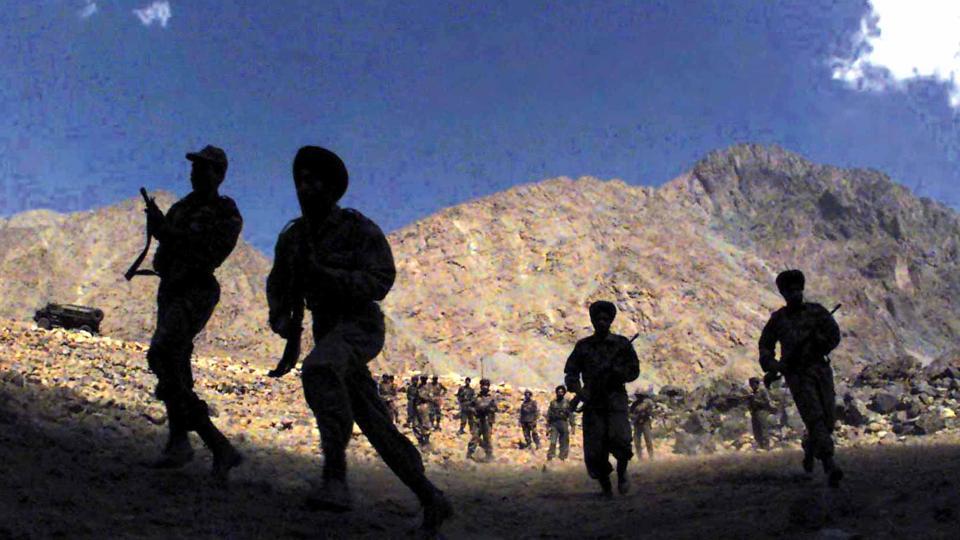
Apart from insisting that men and machine do not cross the LoC, the Vajpayee government believed that the objectives had been substantially achieved. Then defence minister George Fernandes repeatedly said that “Point 5353 was on the Line of Control” and that by convention, the heights on the LoC are never occupied by either country.
But one of the reasons why the war began was that the intruders, in the winter of 1998-1999, had occupied positions that India was traditionally vacating.
The second reason for the Army’s inability to secure Point 5353 is illustrated in the account of the skirmishes by Lt. Gen. Mohinder Puri (retd), who was at the time a Major-General commanding the 8 Mountain Division and in whose theatre the major battles took place. His account, therefore, has to be one of the most authentic.
In his book, Kargil: Turning the Tide (Lancer, 2016), Gen. Puri acknowledges that “a lot of controversies were generated on the status of Point 5353 after the war”.
He then provides the reasons: “This feature lies on the Pakistan side and to capture it, the attacking troops have to approach from the north entailing crossing the LC (Line of Control). Since the LC was not to be crossed and the feature being on the Pakistan side, we had no plans to secure it”. Indian forces then sought to make a barter.
“The enemy occupied Point 5353 as an observation post. In turn, we were in occupation of a feature on the LC. The Pakistani CO established radio contact with CO 16 Gren (commanding officer, 16 Grenadiers) and requested vacation from this feature. We asked him to reciprocate and vacate Point 5353 to which he agreed. However, he reoccupied Point 5353 on 2 August and in retaliation besides occupying the feature vacated by us, 16 Gren was directed to occupy Point 5245 which was southeast of Point 5353. With this event, the war ended in the Mushkoh-Drass sector.”
Entertainment
Meghalaya Reserves Legalized Gambling and Sports Betting for Tourists

The State Scores Extra High on Gaming-Friendly Industry Index
Meghalaya scored 92.85 out of 100 possible points in a Gaming Industry Index and proved to be India’s most gaming-friendly state following its recent profound legislation changes over the field allowing land-based and online gaming, including games of chance, under a licensing regime.
The index by the UK India Business Council (UKIBC) uses a scale of 0 to 100 to measure the level of legalisation on gambling and betting achieved by a state based on the scores over a set of seven different games – lottery, horse racing, betting on sports, poker, rummy, casino and fantasy sports
Starting from February last year, Meghalaya became the third state in India’s northeast to legalise gambling and betting after Sikkim and Nagaland. After consultations with the UKIBC, the state proceeded with the adoption of the Meghalaya Regulation of Gaming Act, 2021 and the nullification of the Meghalaya Prevention of Gambling Act, 1970. Subsequently in December, the Meghalaya Regulation of Gaming Rules, 2021 were notified and came into force.
All for the Tourists
The move to legalise and license various forms of offline and online betting and gambling in Meghalaya is aimed at boosting tourism and creating jobs, and altogether raising taxation revenues for the northeastern state. At the same time, the opportunities to bet and gamble legally will be reserved only for tourists and visitors.
“We came out with a Gaming Act and subsequently framed the Regulation of Gaming Rules, 2021. The government will accordingly issue licenses to operate games of skill and chance, both online and offline,” said James P. K. Sangma, Meghalaya State Law and Taxation Minister speaking in the capital city of Shillong. “But the legalized gambling and gaming will only be for tourists and not residents of Meghalaya,” he continued.
To be allowed to play, tourists and people visiting the state for work or business purposes will have to prove their non-resident status by presenting appropriate documents, in a process similar to a bank KYC (Know Your Customer) procedure.
Meghalaya Reaches Out to a Vast Market
With 140 millions of people in India estimated to bet regularly on sports, and a total of 370 million desi bettors around prominent sporting events, as per data from one of the latest reports by Esse N Videri, Meghalaya is set to reach out and take a piece of a vast market.
Estimates on the financial value of India’s sports betting market, combined across all types of offline channels and online sports and cricket predictions and betting platforms, speak about amounts between $130 and $150 billion (roughly between ₹9.7 and ₹11.5 lakh crore).
Andhra Pradesh, Telangana and Delhi are shown to deliver the highest number of bettors and Meghalaya can count on substantial tourists flow from their betting circles. The sports betting communities of Karnataka, Maharashtra, Uttar Pradesh and Haryana are also not to be underestimated.
Among the sports, cricket is most popular, registering 68 percent of the total bet count analyzed by Esse N Videri. Football takes second position with 11 percent of the bets, followed by betting on FIFA at 7 percent and on eCricket at 5 percent. The last position in the Top 5 of popular sports for betting in India is taken by tennis with 3 percent of the bet count.
Local Citizens will Still have Their Teer Betting
Meghalaya residents will still be permitted to participate in teer betting over arrow-shooting results. Teer is a traditional method of gambling, somewhat similar to a lottery draw, and held under the rules of the Meghalaya Regulation of the Game of Arrow Shooting and the Sale of Teer Tickets Act, 2018.
Teer includes bettors wagering on the number of arrows that reach the target which is placed about 50 meters away from a team of 20 archers positioned in a semicircle.
The archers shoot volleys of arrows at the target for ten minutes, and players place their bets choosing a number between 0 and 99 trying to guess the last two digits of the number of arrows that successfully pierce the target.
If, for example, the number of hits is 256, anyone who has bet on 56 wins an amount eight times bigger than their wager.


